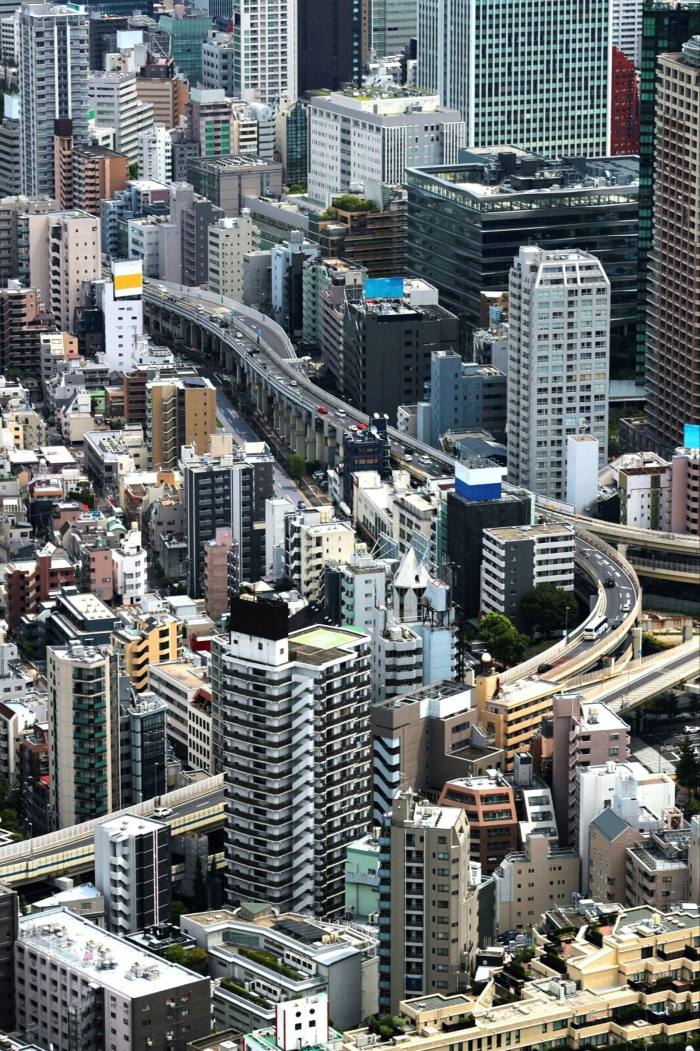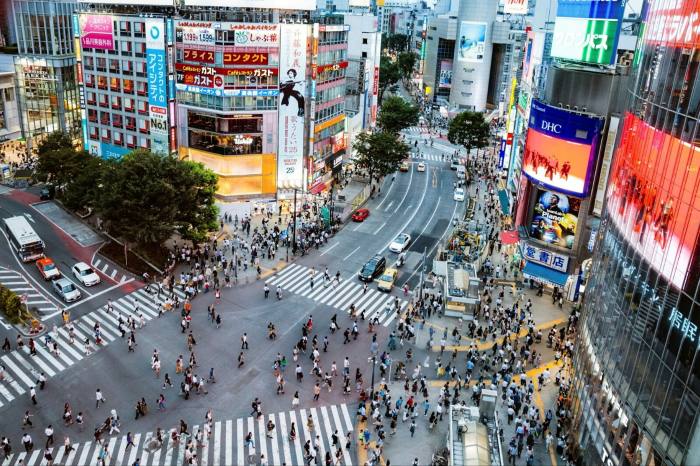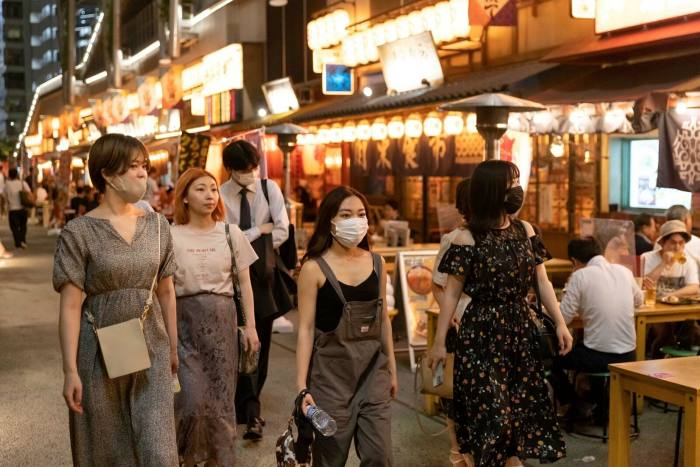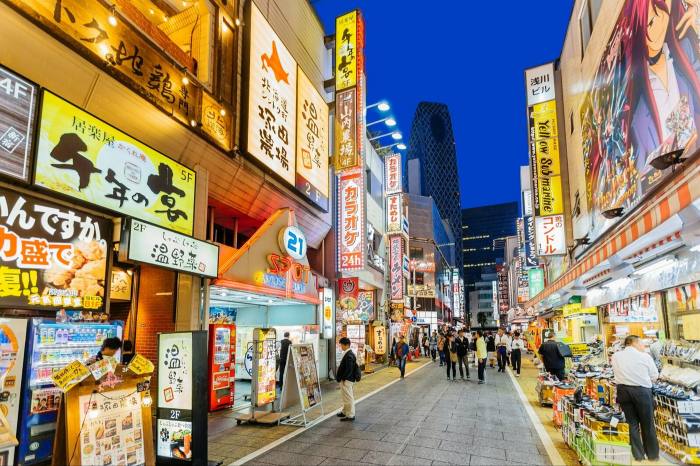Renting in Tokyo: the perks and the pitfalls
[ad_1]

As rents rise across many of the world’s leading cities, prices in the Japanese capital have hardly budged.
In New York, the average rent increased 35 per cent in the year to June, in London, it rose 12 per cent, and in Sydney, it rose 10. In Tokyo, over the same period, the average rent increased by just 0.2 per cent.
Stable rents are good news for foreign workers who are arriving in large numbers following a relaxation of Japan’s border controls earlier this year. Overseas visitors to Japan exceeded 100,000 for the third consecutive month in June.
“My schedule is crazy,” says Kaz Harada, a local agent specialising in rental housing for foreign workers. “People are coming from France, US, UK and Hong Kong. They are working generally for international companies.”
But Tokyo’s rental market differs from that of many of the world’s leading cities: hidden costs and logistical challenges can make moving more complicated and expensive than headline prices suggest.
After the challenges of finding a rental home in Hong Kong, where he had lived for five years, or in Melbourne, where he rented for five years before then, Jeremy Smart, 29, found a flat to rent easily when he moved to Tokyo in April to take a new job in publishing.

There were plenty of suitable homes in areas he liked and the buildings were newer and better kept than those he had lived in Hong Kong. After two weeks of searching, he found the right apartment; two weeks after that he and his partner moved in.
And, while it was still small by most standards — at 37 sq m — his Tokyo home is 50 per cent larger than the one he left in Hong Kong, and costs less. “We went from paying the equivalent of US$1,670 per month to paying less than US$1,400,” he says.
Smart and his partner live in Tomigaya, part of Shibuya ward. It’s an area popular with foreign workers, with its shopping area surrounding Shibuya station — one of the world’s busiest and host to the notoriously congested pedestrian road crossing. Others opt for Minato ward, which hosts many diplomatic embassies, as well as the headquarters of many leading Japanese and international companies. Within Minato, Azabu-Jūban is popular thanks to its mix of Japanese and western culture in local bars, shops and restaurants and a relatively high number of English speakers in a city where the language barrier can be severe.
When he started looking for a home in March, Stanislav Belooussov, 32 — from Belgium, but living in Jakarta at the time — was impressed with the range of suitable properties within his budget of between $2,000 and $3,000 per month. “Unlike other cities in Asia you don’t really have areas you should avoid — where you feel you shouldn’t live,” he says.

“Renting a place in Tokyo is so much easier than in New York: the quality of apartments you see in relation to their price is so much higher. It’s like night and day,” says Hiroko, who returned to Tokyo after a period living in Queens, New York in 2016.
When she left New York, Hiroko, who declined to give her surname, and her housemate were paying nearly $4,000 per month for a two-bedroom, second-floor walk-up, a 50-minute commute to work. While it was a little smaller, the one-bedroom flat she moved to in Tokyo cost around $1,500, had a lift, a view, was less than 30 minutes from her work and was in a popular neighbourhood.
“I found a place within a week. It certainly wasn’t like Manhattan, where people were just waving the cash,” she says.
Finding a home in Tokyo today may mean cheaper rents — and less competition for homes — than in many of the world’s leading cities. But moving costs are very high, and renters face significant practical obstacles that they may not have encountered before.
Harada estimates moving costs equate to between four and five months’ rent for a typical two-year contract. In Japan, renters, not landlords, generally pay estate agents’ fees — typically one month’s rent plus tax. For homes in high demand, landlords may also charge key money or reikin — a non-refundable deposit to secure a property — generally one or two months’ rent. In most cases, tenants must have insurance to cover damages to their rental home. They must also have a guarantor — for a foreigner this is typically a company — legally responsible for any unpaid rent or damages.

A large chunk of renters’ deposit is taken by the landlord at the end of the contract as a cleaning fee; Harada estimates that, for a 100 sq m flat with air conditioning, this fee is more than $1,000. When Alexis Au-Yeung, 35, who is from the US and who moved from Hong Kong to Tokyo in 2017, left his first rental flat, the landlord took half of his two-month deposit for the service. “I was shocked, because it cost so much. It felt like a bit of a moneymaking exercise.”
Harada says that many landlords won’t rent to foreigners, wary of the language barrier and a perception that foreign tenants are rowdier and less responsible, although large corporate landlords — such as Tokyu and Mitsubishi — which lease homes on behalf of private owners, are comfortable with foreign workers. He estimates homes of this type comprise between 10 per cent and 30 per cent of those in Shibuya and Minato.
In May, Belooussov waited two weeks for his new landlord — a private individual — to decide whether to accept him as a tenant, during which time his agent would not let him offer on any other places. “You’re just waiting; you can’t do anything and you’re getting more nervous as you get short of time. In Singapore, Jakarta or Kuala Lumpur [where he has previously lived] typically the next day I was paying the money [to secure the property],” he says.

Smart soon realised that moving with an animal — a street cat he had adopted in Hong Kong during lockdown — ruled him out of 90 per cent of suitable Tokyo homes. Most of the agents he met, meanwhile, had only worked with foreign workers in the finance or technology industries who had larger accommodation budgets than his, often funded or subsidised by their employers. Belooussov approached five agents before finding one that was suited to his needs. “Sometimes, they were only offering [homes in] a specific building or they would push only unsuitable apartments on me.”

These features make for some surprises for new arrivals to Tokyo’s rental market. But at least they can rely on steady rents, according to Shigeto Nagai, chief Japan economist at Oxford Economics in Tokyo.
“Rents have been stable throughout the pandemic, and the negotiating power of tenants remained strong,” he says. Japan avoided the sharp falls in rents that were a feature of many global cities in the early stages of the pandemic thanks to a resilient jobs market, which benefited from government support and a culture at Japanese companies to cut pay rather than jobs during tough times.
Sharp swings in rent prices have been rare historically, a trend that is unlikely to change, says Nagai. Japan’s more than three. decades of low growth have meant stagnant household incomes; legal and political tradition protects tenants, and the appeal of property to investors has been slow to recover following the bursting of the property bubble in the early 1990s. “There has always been more rigidity in home rents in Japan compared to the US, Germany and so forth,” he says.
Rental guide
The average size of a Tokyo apartment is 51.4 sq metres, according to Tokyo Kantei, a local property data company.
The average Tokyo rent in July was $28 (¥3,823) per sq metre per month (Tokyo Kantei).
Direct flights to Tokyo take 4 hours 10 minutes from Hong Kong and 9 hours 40 minutes from Sydney
[ad_2]
Read More:Renting in Tokyo: the perks and the pitfalls

Comments are closed.